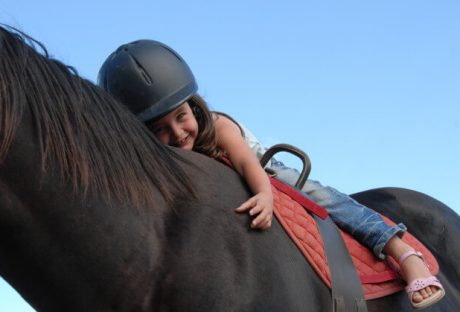Summer camp can be a meaningful experience for any child, full of opportunities for social and emotional growth, independence and exciting new activities. Any good camp is designed to provide all of these and more for children, but how do you determine whether a program is prepared to help your child with autism access the benefits and have a good time? When should you choose a specialty camp and when is “regular” camp appropriate for your child?
Most parents wish for their child to fit in and enjoy being in typical social environments. We would prefer them to be in regular classes, normal extracurricular activities and the same camps as their peers. But which is more important, the “fitting in” part of the “typical” part? Anxiety decreases and learning increases when a person feels feel comfortable, normal and accepted in a setting. If this can be achieved in a regular camp, that may be an appropriate choice for your child. If, however, they feel like the odd person out, like they can’t catch up or don’t “get it” like their peers, it could be detrimental to their self-esteem.
A regular summer camp can be a good choice if the staff is trained in neurological and developmental differences and how to support the unique needs of a child with autism, such as allowing greater time for transitions, chunking tasks, and offering frequent downtime. A child with a lot of social skills training who has a good set of coping strategies and ability to self-advocate may feel comfortable navigating a typical camp setting. In this case, encourage the director to emphasize an appreciation for differences at least within your child’s cabin, and preferably the whole camp.
For many children with autism, a camp designed especially for them is the better choice. Staff is well-trained in neuro-development, common autism characteristics, and strategies for guiding their campers through a positive experience. They know they will need to help with friendship-making skills, independent living routines, and reducing anxiety through pre-processing activities. More than that, when campers are surrounded by peers who are “like them”, they can finally relax in a place where they feel normal. Everyone is struggling with some set of social skills, everyone needs a little extra time to process new information, and almost everyone has a sensory issue. For most children, this is a relief, not a punishment.
Parents will sometimes ask us at Talisman Summer Camp how their children can learn social skills if everyone is struggling. But each of our campers has different strengths and weaknesses. One may be an excellent conversationalist with no sense of personal space; another might be very respectful of space but have a hard time changing from one activity to another; a third may totally “get” sarcasm and only eat beige foods. They all have strengths they can model for each other, and it is also perfectly normal to talk about these things in their group, so they can grow together. In this way, no one camper is always the learner. And the staff are there to provide guidance in all areas.
Remember when assessing whether to send your child with autism to a regular or specialty camp to keep in mind where they will feel comfortable enough to relax and have fun. Ask many questions of each camp, keep your child’s wellbeing central and you will be able to make a good choice for them.
Read Also:





















